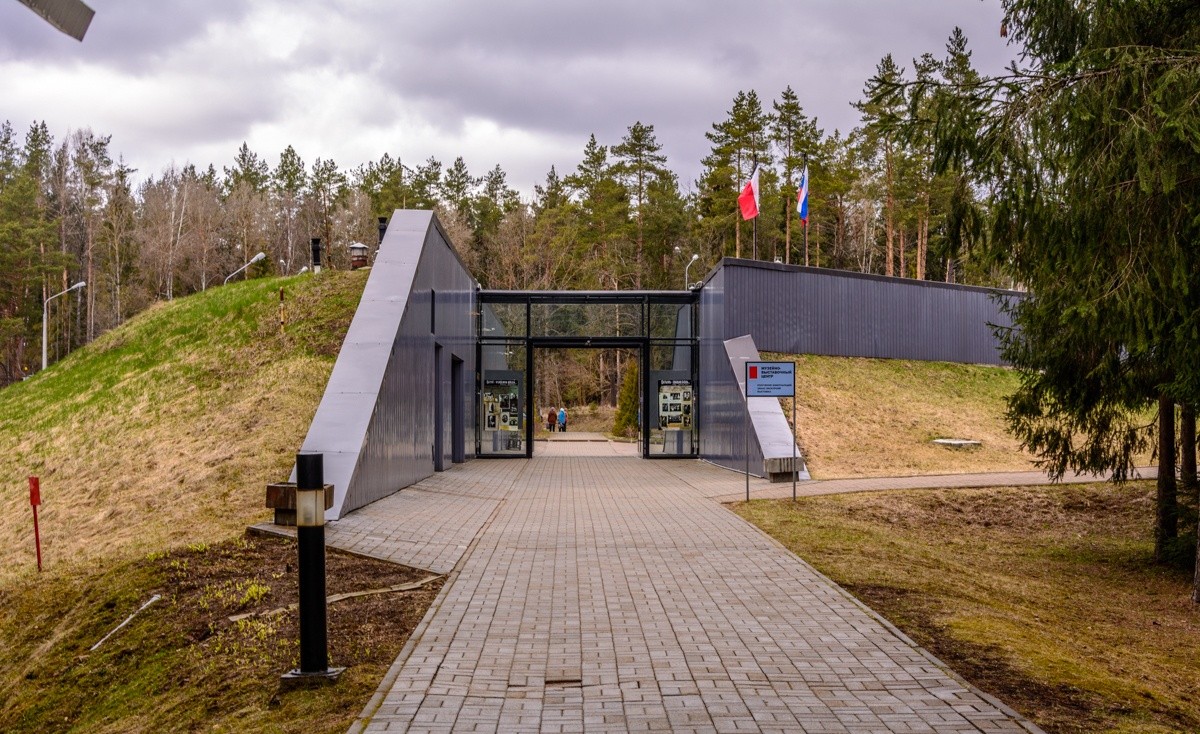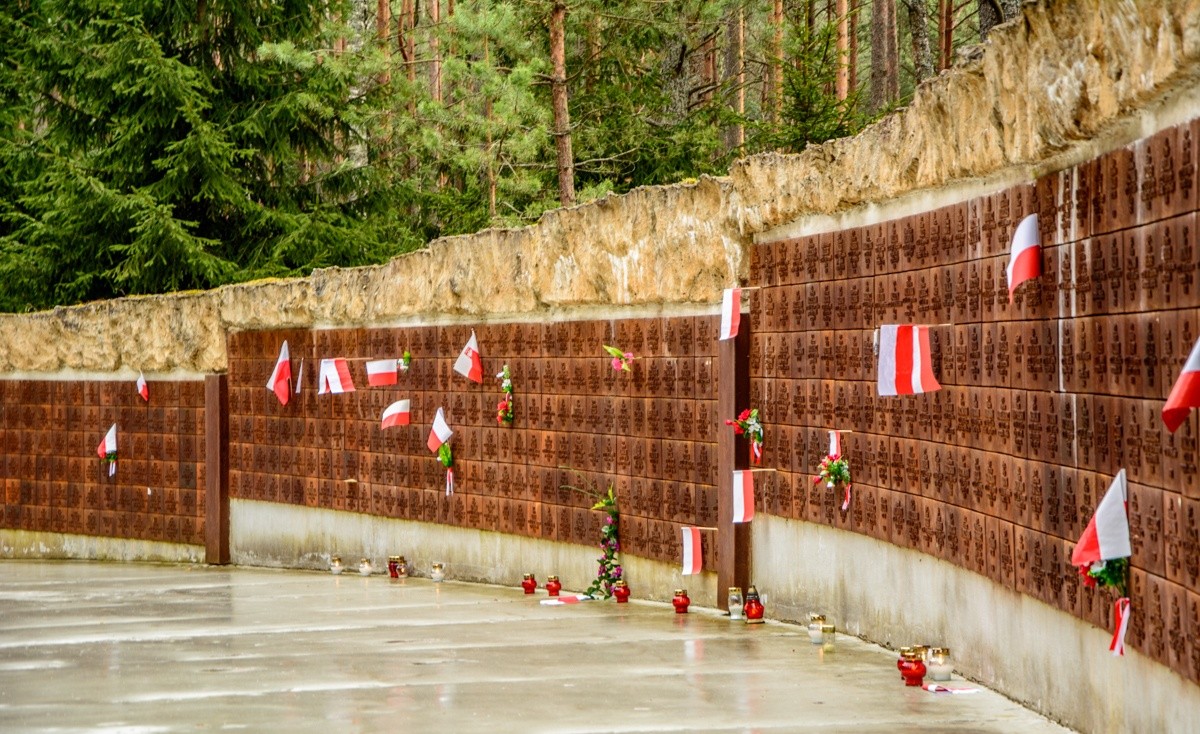Memorial «Katyn»
Описание
Memorial «Katyn» is located 20 kilometers from the center of Smolensk, between the villages of Gnezdovo and Katyn, in the so-called “Katyn forest” — in place of the tragic events of 30-40s of the twentieth century, where the victims were citizens of two countries — the Soviet Union and Poland. Katyn forest has become a symbol of martyrdom and doom people in front of the monstrous power of totalitarianism.
On July 28, 2000 the grand opening of the State Memorial Complex «Katyn» took place — Russia's first international memorial to the victims of Stalin's political despotism. Organizers of a memorial building, and investors were the Ministry of Culture of the Russian Federation and the Council for the Protection of Memory, Struggle and Martyrdom of the Republic of Poland.
All the visitors of the Memorial pass through the main entrance, made in the form of two burial mounds, connected by a glass gate, according to the architects, representing the delicate line between this world and the world of the past. Beyond the gate begins the alley leading to the first ritual ground where the memorial plate in honour of 500 Soviet prisoners of war massacred by the Nazis in May 1943, is installed. Next to it there is the museum reconstruction «The Gulag on wheels"(Governmental Bureau of Prison Camps and Jails) — in the freight cars in the 1920s and 50s. repressed citizens were transported to the places of detention.
Ten- meters-long Orthodox cross — the symbol of everlasting remembrance and repentance opens the Russian part of the Memorial. The perimeter of each of the nine graves of political repression victims fence surrounds irregular, thus emphasizing that the exact number of buried is unknown. Due to the fact that the territory of the Russian part of the memorial has not been thoroughly studied, there were constructed bridges, designed to protect the rest of the slain. Outside the modern Memorial, in the «Valley of Death,» there are over 200 disordered graves of Soviet citizens. In 2009, there was erected a memorable sign dedicated to our compatriots.
On the Polish military cemetery in 6 large mass graves lie the remains of Polish officers. In individual graves lie the dust of generals Bogatyrevich B. and M. Smoravinsky. Altar group consists of the altar table and the wall with the names of prisoners from Kozelsk camp, shot by the NKVD in April-May 1940, and the Catholic cross serves as an open-air temple. Katyn bell, placed below ground level is intended to remind those who repose there and serves as a warning to future generations. The original burial places are slabbed with cast outline the «pits of death». Signs of various religious denominations indicate that buried in the Katyn — people of different faiths.
Russian and Polish parts are joined with the united Alley of Memory, which starts from the portal of the First ritual ground and completes with the Second ritual ground. This alley — is a symbol of a common memory and the unforgettable union of the two Slavic peoples in the unhealed pain.
Источник фотографий: Russia.Travel
Memorial «Katyn» is located 20 kilometers from the center of Smolensk, between the villages of Gnezdovo and Katyn, in the so-called “Katyn forest” — in place of the tragic events of 30-40s of the twentieth century, where the victims were citizens of two countries — the Soviet Union and Poland. Katyn forest has become a symbol of martyrdom and doom people in front of the monstrous power of totalitarianism.
On July 28, 2000 the grand opening of the State Memorial Complex «Katyn» took place — Russia's first international memorial to the victims of Stalin's political despotism. Organizers of a memorial building, and investors were the Ministry of Culture of the Russian Federation and the Council for the Protection of Memory, Struggle and Martyrdom of the Republic of Poland.
All the visitors of the Memorial pass through the main entrance, made in the form of two burial mounds, connected by a glass gate, according to the architects, representing the delicate line between this world and the world of the past. Beyond the gate begins the alley leading to the first ritual ground where the memorial plate in honour of 500 Soviet prisoners of war massacred by the Nazis in May 1943, is installed. Next to it there is the museum reconstruction «The Gulag on wheels"(Governmental Bureau of Prison Camps and Jails) — in the freight cars in the 1920s and 50s. repressed citizens were transported to the places of detention.
Ten- meters-long Orthodox cross — the symbol of everlasting remembrance and repentance opens the Russian part of the Memorial. The perimeter of each of the nine graves of political repression victims fence surrounds irregular, thus emphasizing that the exact number of buried is unknown. Due to the fact that the territory of the Russian part of the memorial has not been thoroughly studied, there were constructed bridges, designed to protect the rest of the slain. Outside the modern Memorial, in the «Valley of Death,» there are over 200 disordered graves of Soviet citizens. In 2009, there was erected a memorable sign dedicated to our compatriots.
On the Polish military cemetery in 6 large mass graves lie the remains of Polish officers. In individual graves lie the dust of generals Bogatyrevich B. and M. Smoravinsky. Altar group consists of the altar table and the wall with the names of prisoners from Kozelsk camp, shot by the NKVD in April-May 1940, and the Catholic cross serves as an open-air temple. Katyn bell, placed below ground level is intended to remind those who repose there and serves as a warning to future generations. The original burial places are slabbed with cast outline the «pits of death». Signs of various religious denominations indicate that buried in the Katyn — people of different faiths.
Russian and Polish parts are joined with the united Alley of Memory, which starts from the portal of the First ritual ground and completes with the Second ritual ground. This alley — is a symbol of a common memory and the unforgettable union of the two Slavic peoples in the unhealed pain.
Источник фотографий: Russia.Travel












